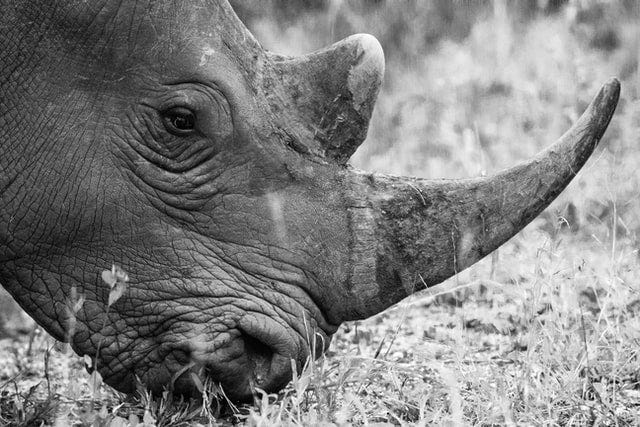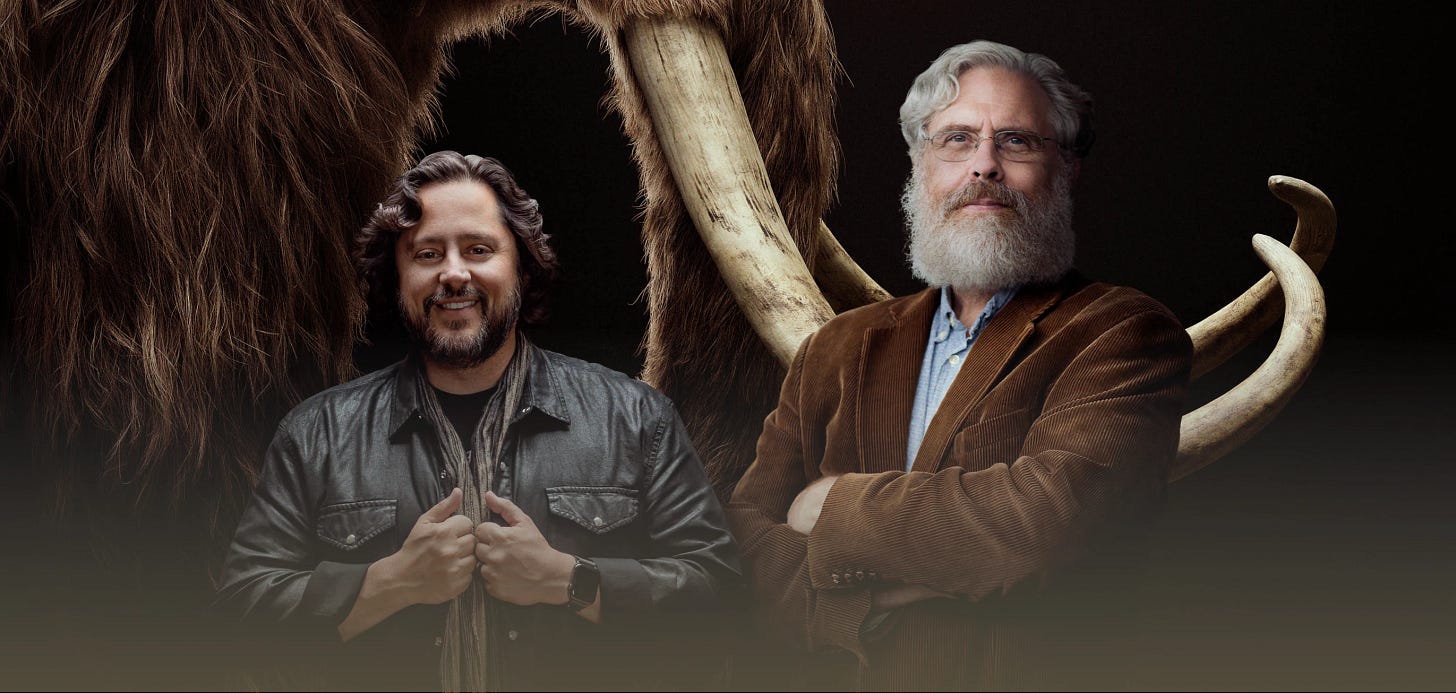Welcome to a new episode of Year 2049, your fun weekly guide to the innovations, discoveries, and events shaping the future of technology, climate, science, and more.
If this was forwarded to you, you can subscribe for free to get a new story in your inbox every Friday 👇
Hello friends 👋
Genomics is one of the most exciting fields to be in at the moment. We’ve already talked about gene editing in the context of curing diseases. Today, we explore how it’s being applied to species conservation and recreation.
Hope you enjoy this one.
– Fawzi
This week’s comic
The backstory
The extinction problem
At least 40,000 species are threatened with extinction. The sad reality is that the majority of the blame can be attributed to us and our ways of living.
Some disturbing facts:
Human activity is known to have forced at least 900 species to extinction in the last 500 years
There has been an average 68% drop in global population sizes of amphibians, birds, fish mammals and reptiles between 1970 and 2016 (WWF).
The current species extinction rate is estimated to be between 1,000 and 10,000 times higher than the natural rate (IUCN).
Nature operates like an intricate system where each species has a unique and important role to play. If any of these disappear, the effects cascade throughout the entire ecosystem.
Colossal Biosciences
One company is taking an unusual approach to bring back extinct species.
Colossal Biosciences wants to recreate and rewild the woolly mammoth that roamed the Earth over 10,000 years ago. The Dallas-based startup was founded in 2021 by entrepreneur Ben Lamm and geneticist George Church, who has spent over a decade trying to recreate the woolly mammoth as a professor at Harvard.
Colossal has already raised a $15 million seed round and is aiming to have its first viable mammoth embryos in the next 4-6 years.
How do you recreate extinct species?
Colossal isn’t exactly “reviving” the original woolly mammoths. The goal is to recreate a new species that resembles the woolly mammoth as much as possible. This process is known as de-extinction.
How will they do that exactly?
By using the Asian elephant genome and editing it using CRISPR:
Asian elephants and woolly mammoths share 99.9% of their genome (National Geographic). That 0.1% still represents over 1 million individual genetic differences between both species.
Colossal has identified 60+ genes that characterize the woolly mammoth.
Even with this information, the task is incredibly challenging because it requires making a high volume of genetic modifications at once, also known as multiplex editing, which can be very error-prone.
Why the woolly mammoth?
Other than it being really cool to put as your LinkedIn tagline (Mammoth Creator?), Colossal is focusing on woolly mammoths for a few reasons:
Their genomes are well-preserved: There are lots of well-preserved mammoth specimens which gives scientists access to full genome sequences. This allows them to understand and analyze the complete genetic code that makes a mammoth to try replicating it.
They can help slow down the melting of Arctic permafrost: back in the day, mammoths helped stabilize the arctic ecosystem by preventing permafrost from melting. The permafrost layer stores large quantities of carbon which would be released back in the atmosphere if it continues to melt. And the last thing we need is more carbon in the air.
The de-extinction divide in the scientific community

Even with all the hype surrounding Colossal’s moonshot idea, many scientists are skeptical about whether this is an effort worth undertaking. Their argument is that money spent on de-extinction projects, like recreating the woolly mammoth, would be better spent on conservation efforts for living species on the brink of extinction.
A 2017 study out of Carleton University found that allocating funding to conservation efforts for living species instead of de-extinction projects would help us save “roughly two to eight times more species”. Another study argues that species that have recently gone extinct would be better candidates for de-extinction.
“If someone wants to work on de-extinction because it’s technically fascinating, that’s fine. But if the person is couching de-extinction in terms of conservation, then she or he needs to have a very sober look at what one could do with those millions of dollars with living species — there’s already plenty to do.
– Dr. Joseph Bennett, biologist at Carleton University, in an interview with the New York Times
However, Dr. Bennett isn’t completely opposed to de-extinction and acknowledges that it can help advance research on genetic technologies.
Final thoughts
I agree that de-extinction and recreating the woolly mammoth shouldn’t be an alternative to conservation, or be advertised as a way to solve climate change and preserve our ecosystems. Even worse, conservation efforts are severely underfunded which makes any money going towards de-extinction look like a bad judgement call.
But I also think funding both conservation and de-extinction research is important. Research into de-extinction will help advance and create new tools for gene editing, which could be re-applied in fields like healthcare and agriculture. I’m much more excited by the genetic engineering advances around multiplex editing that Colossal makes rather than bringing back the woolly mammoth.
As for conservation, we undoubtedly need more funding to help preserve the species that are still living today and play a crucial role in how our ecosystems operate. It’s our fault that they’re at a high risk of extinction and it’s our responsibility to fix it.
Picking a side in this debate doesn’t really solve anything. Things are rarely black and white, so it’s important to understand what each side is trying to achieve. They’re both promoting the advancement of science and the preservation of nature. Their work will be a net-positive for society.
The real problem is the lack of funding that goes into conservation. To put things in perspective, about $500 billion is spent globally on fossil fuel subsidies (IEA). Let’s not forget where all the money is really going.
What do you think? Leave a comment and let me know your thoughts.
Something beautiful
NASA’s Hubble Space Telescope snapped a picture of three galaxies merging. The universe is beautiful.
Thank you for reading!
I love writing this newsletter every single week. If you enjoyed this, I would appreciate it if you shared this with your favourite people.
Share Year 2049 by email, WhatsApp, LinkedIn, or Twitter.
or copy and paste this link: https://year2049.substack.com/welcome
If you missed the previous episode
I explained the 6 levels of driving automation in an easy way 🚗
or check out all previous Year 2049 episodes.
How would you rate this week's edition?












I’m with the conservationists. And we need every available $ there. Let’s help the living creatures first before we get into the resurrection business.
"Be careful what you wish for" when it comes to Wooly Mammoths tromping about.
Read my previous post about CRISPR if you want to learn how it works: https://year2049.substack.com/p/episode-6-bad-news-good-news-?s=w